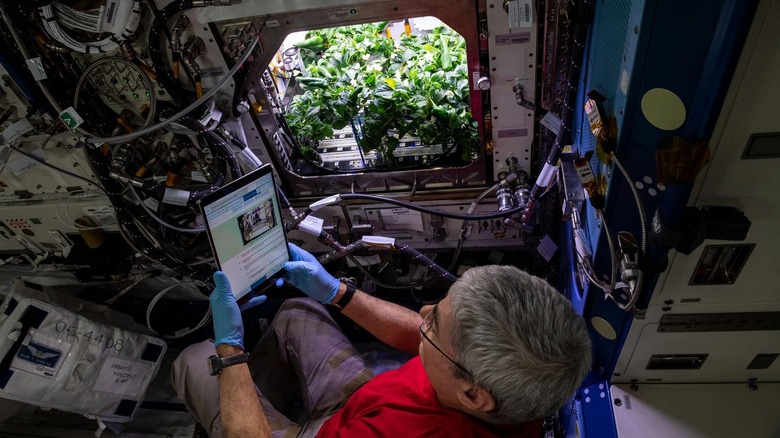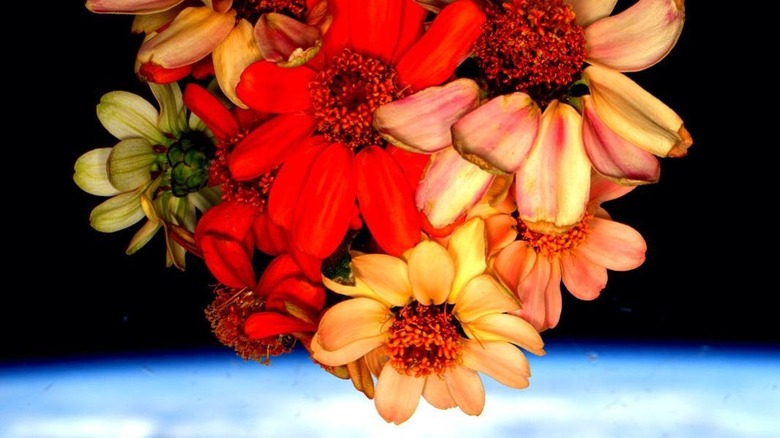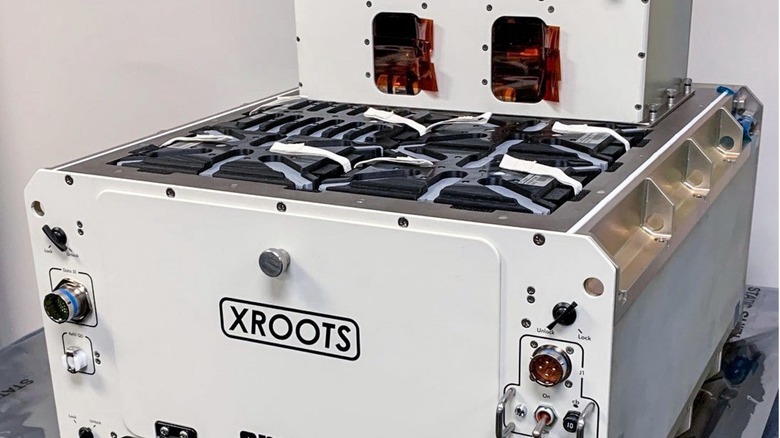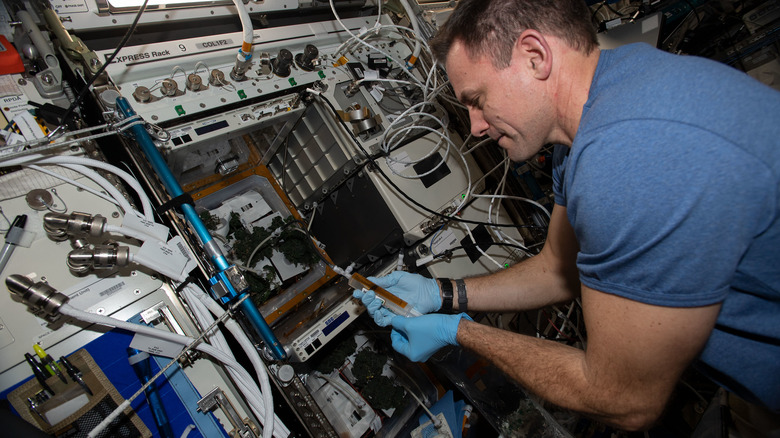Here's How Astronauts Grow Edible Crops On The International Space Station
There are lots of challenges to living on the International Space Station. From having to get used to working in a microgravity environment to being trapped in a small space with your colleagues, there are all sorts of issues that can be a challenge to the mental and physical health of astronauts. But one issue you might not have thought about is food. While cargo spacecraft make regular deliveries of supplies including plenty of food for the astronauts, these meals are typically processed so that they can keep for a long time.
One big problem for astronauts is called meal fatigue, where eating the same things day after day can make people lose their appetite and interest in food. That's an issue because astronauts can start to lose too much weight, and they could struggle to perform the very physical aspects of their job. One way to help astronauts keep eating is to make sure they have occasional fun treat foods, so astronauts on the ISS will receive rare special treats like pizza. Astronauts can also request extra snack items or condiments to be brought along on the supply runs, though there's only limited space to spare inside these deliveries.
The biggest things that astronauts crave, though, are fresh fruits and vegetables. Living for months off preserved foods is dispiriting, so having something fresh to eat can be a great boost. For this reason, as well as in preparation for longer-duration space missions like a potential future crewed mission to Mars, the astronauts on the ISS work to grow a variety of crops there.
Methods for growing crops on the ISS
As fresh food is so important for astronauts, there are several different methods they use to grow crops on the ISS. The first is a carry-on suitcase-sized garden called Veggie, or the Vegetable Production System, which was specially designed to grow edible crops for the crew. The two Veggie cases hold six plants at a time each, and the system has been in use since 2014.
Instead of using soil that would be full of Earth bacteria that could cause problems on the ISS, the Veggie system uses "plant pillows" made of Kevlar that hold a type of growth media made from clay. The system manages the plants using just a small amount of water, growing them all the way from seeds to fully harvestable vegetables. Veggie has been used to grow many types of plants, particularly leafy greens like lettuce, cabbage, mustard, and kale, and was even once used by astronaut Scott Kelly to grow a beautiful bunch of zinnia flowers.
In addition to Veggie, a newer growth chamber called the Advanced Plant Habitat (APH) was added in 2021. This one has a substrate made of clay and filled instead of plant pillows, and while both systems use LED lights, the APH lights can be adjusted for many more colors and even infrared, allowing scientists to see how types of light affect plant growth. This one has been used to grow plants with slightly more complex needs like radishes and chili peppers.
Hydroponics and aeroponics for growing crops
Here on Earth, two popular ways of growing plants without putting them in soil are hydroponics and aeroponics, in which the plants are grown in water or air respectively. The plants' roots are supplied with nutrients that are either dissolved in the water or misted through the air.
On the ISS there is another experiment to test out both of these methods for growing crops in space called the eXposed Root On-Orbit Test System or XROOTS. This system is designed to give researchers a view of the plants' roots as they grow, which they can record with photos or video.
One of the Veggie chambers has the XROOTS system added to it, and the idea of this system is to test out whether the concept could effectively be scaled up, so that instead of a small chamber holding just a few plants, in the future there could be large systems producing enough food for people to eat regularly.
Stressed plants
There are challenges to growing food in space, though, even with these various systems set up and ready. It requires a lot of planning from the ground, such as choosing the right kinds of seeds and constantly monitoring the health and growth of the plants.
Recently, for example, the Veggie system saw a drop in humidity on the station which caused problems with the plants' growth. Even when given extra water, the plants were having a hard time adjusting to the new conditions. The plants did survive the ordeal, but it was useful for teaching the researchers about challenges future space explorers could face if they rely on growing their own food.
"We can learn about what happens when plants are really water stressed. And that's a pretty common thing in spaceflight," said Veggie project scientist Dr. Gioia Massa. "It was challenging, but we did get some successes from it and I think we'll get more. We'll integrate new techniques, and new technologies and approaches, too."



